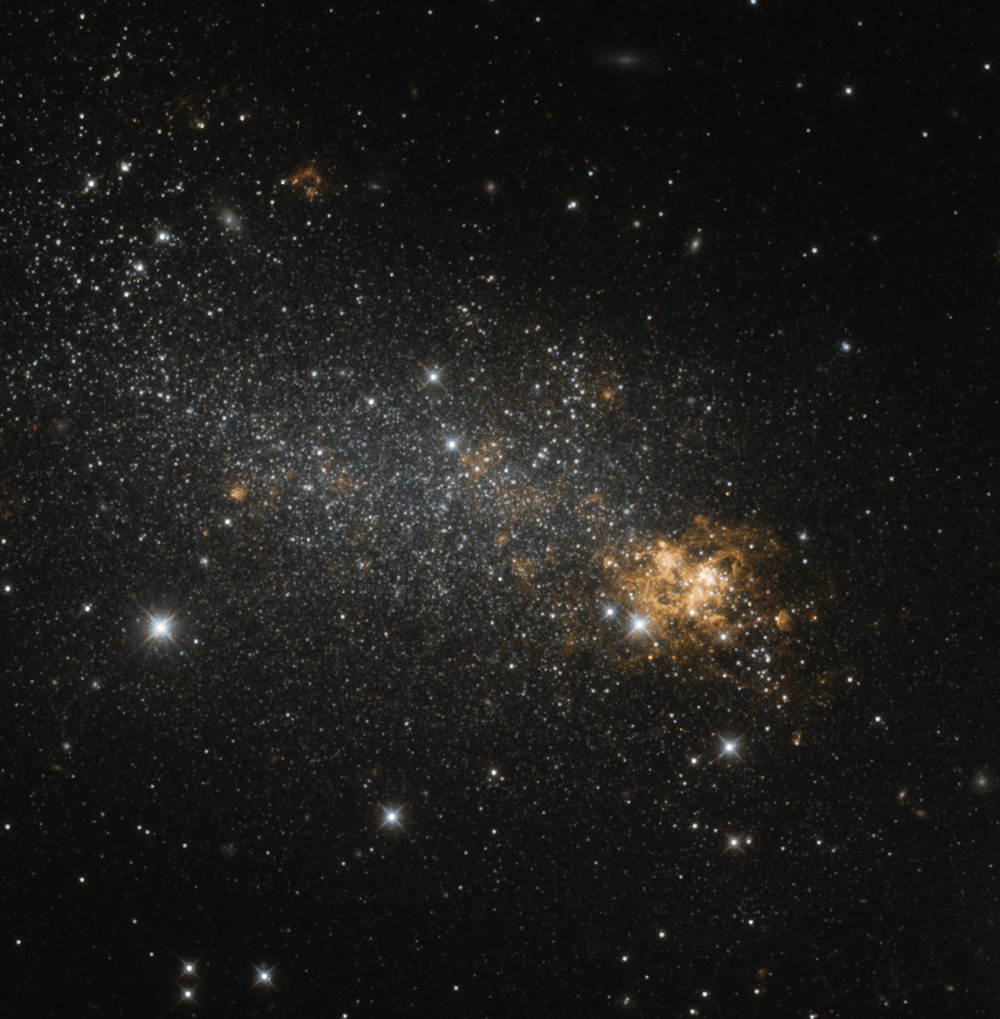
NGC 5408 (2014)
This is an irregular galaxy once mistaken for a planetary nebula. I managed to combine a couple of infrared filters (more or less grey) from the WFC3 with some H-alpha (orange) data from the WFPC2 for an interesting result. What bothers me here is that I have no idea how to obtain some x-ray data because if I had that then I could point to it and say there’s some kind of black hole accretion disk of some sort going on there, which is creating an ultra-luminous x-ray source (astronomers get to use all the cool words). Looking at the citations for NGC 5408 X-1, it must be a pretty neat thing because it gets cited over and over again.
Conclusion: Astrophysicists love black holes. Who doesn’t, though?
Data from these two proposals were used:
An Irradiated Disk in an Ultraluminous X-Ray Source
The Recent Star Formation History of SINGS Galaxies
Red: WFC3/IR F160W + hst_11987_29_wfpc2_f656n_wf_sci
Green: Pseudo
Blue: WFC3/IR F105W
North is up.
Copyright information:
Hubble data is public domain, but I put a lot of work into combining it into beautiful color images. The minimal credit line should read: NASA / ESA / J. Schmidt

This work is licensed under a Creative Commons Attribution 3.0 Unported License.


